Meiji Shrine Kobudo Embu Taikai
Celebrating Emperor Meiji's Birthday
Every year, in memory of Emperor Meiji, one of the biggest martial arts demonstrations in Japan takes place, the so called "Meiji Shrine Kobudo Embu Taikai". It is greatly supported by the Shiseikan, a training hall for Japanese Budo including Kyudo (archery), Judo, Kendo, Aikido and Kenjutsu (sword's practice).
Culture Day and the Venue
The Meiji Shrine located in Tokyo is surrounded by a forest covering 70 hectares, consisting of roughly 120'000 trees, donated from allover Japan. Adjoined to one of the biggest parks in Tokyo, Yoyogi Koen, it's one of the largest and most beautiful green areas in the middle of the city. The Meiji Jingu is famous not only for the impressive shrine itself, but also the lovely iris garden, whereas the Yoyogi park attracts young and old for weekend picnics, strolls and gatherings of all kinds.
The Meiji Shrine was built in honor of Emperor Meiji and his wife the Empress Shoken, in 1920. In Japan, shrines are separated in 2 categories, the standard shrine called "Jinja", and "Jingu", the much bigger shrines that used to be state owned. With the very famous Ise Jingu in Ise, the Meiji Jingu is one of the two biggest places of worship in Japan, by far the most visited by Japanese tourists from all over the world.
The garden was designed by the emperor himself prior to his death, and was conceptualized to host a museum at its center. A museum that still exists today and mostly exhibits old items that belonged to the emperor and his wife.
From 1924 to 1942 the Meiji Shrine Games were hosted, pre-war Japan's major sports event. During the 1945 bombings the shrine was destroyed, and eventually rebuilt in 1958.

The Meiji Jingu Shrine - the day of the event
The Shiseikan Dojo was built in the early 70s at an outer section of the shrine's park. Surrounded by trees, it's definitely one of Tokyo's best known Dojos, not only because of its amazing location but also for the famous Sensei teaching there, such as Inaba Sensei of the Kashima Shin Ryu school to only name one.
Contiguous to the Shiseikan Dojo is one of the most beautiful Kyudojo in Japan, where many competitions are held throughout the year.

The wonderful Kyudojo
In Japan, the 3rd of November is a national holiday called "Bunka no Hi (文化の日)", or "Culture Day" in English. This day is dedicated to Emperor Meiji's birthday and it's when he's remembered and celebrated every year, since 1948.
During Japanese traditional ceremonies and especially religious ceremonies, representations of the ancient arts, including martial arts, are customary. The Kagamibiraki, a ceremony to welcome the new year held e.g. at the Yasukuni Shrine, alike diverse events that include such demonstrations are often related to religious events and take place near Shinto shrines. You might have already noticed that when checking out martial arts demonstration videos on YouTube.
The Kobudo demonstration is organized by the Nihon Kobudo Shinkokai organization (Japan Kobudo Promotion Society). The Kobudo Shinkokai is one of the two main organizations gathering ancient Koryu, together with the Nihon Kobudo Kyokai from the Nippon Budokan.
The Meiji Jingu Kobudo demonstration is the main event of the Kobudo Shinkokai.
As part of a religious ceremony, a specific Shinto ceremonial protocol has to be respected and each practitioner is invited to a purification ceremony and a sip of Sake (Nihonshu). Unfortunately, the ceremony is restricted to the participants and we were not able to attend.
Emperor Meiji
Emperor Meiji (1867-1912), also called 'Meiji the Great', is the most illustrious emperor in Japanese History. Put back on the throne during the Meiji revolution, a period of radical changes, Emperor Meiji is the architect of modern Japan, and one of the key players to change "Samurai martial arts" into modern Budo.
Long story short, until the end of the 19th century, Japan is closed to foreign countries. After what has been the longest isolationistic period of its history, Japan faces the American black ships lead by Commodore Perry and realizes how behind they technologically are in comparison to the West.
Afraid, the warrior class leading Japan at the time was split into two camps, advocates and opponents of Japan's opening. Those against used the imperial line as pretext to restore traditional Japan, they fought, they won, then lost, won again - but by that time, the majority of the emperor's supporters was in favor of the country's opening.
After Emperor Komei's passing, Emperor Meiji succeeded to the throne and at the age of 15, he was assigned to the role of governing a newly opened Japan.
In only a few decades Japan evolved to a modern society, and Emperor Meiji played a big role in leading and reforming his nation. That, and the fact that Emperor Meiji was the last emperor without involvement with the nationalists which lead to World War ll are the reasons why he's still loved and revered today.

Emperor Meiji
Thanks to amazing teachers, and mainly to Judo's founder Jigoro Kano, the martial arts went through the same process of renewal and art of wars became means of education.
To learn more about this period and how Budo made the transition, please check out the interview with Alexander Bennett we published a few months back, it presents details on the evolution of Budo during the 20th century.
Despite the fact that emperor Meiji is sometimes hold responsible for the disappearance of the warrior class, he is also known to have helped promoting their new forms at the end of his reign and it therefore feels natural that martial artists pay him tribute via those demonstrations at the Meiji Jingu Shrine every year.
Kobudo, the Traditional Schools
But back to the event. On this day, every traditional Japanese martial arts school of distinction participates, sends its most talented and most famous teachers and students to show their skills and compete against each other. An eye catcher already before the event officially starts are the Yabusame, the Japanese horseback archery, warming up in the early morning hours.
Unfortunately, they always have their competitions at the same time as all the Kobudo schools. We decided to focus on those, but hope to get some videos of the Yabusame as well next year.
Some warming up exercises in the park before the demonstrations
The first Embu (demonstration) starts at 10am, after a short ceremony accompanied with shell instruments, the conch.
60 schools demonstrating on 2 areas during roughly 10 minutes each, which represents quite a long demonstration compared to what is seen at some other major events. It ends at roughly 4pm with the Hojutsu, the Japanese traditional gunnery.
Some schools such as Katori Shinto Ryu or Yagyu Shinkage Ryu are represented by multiple groups and it is refreshing to see that despite their differences, the Kobudo organizations are able to bring them together for events of this importance.

Yagyu Shingan Ryu
This time, we decided to film (almost) all the 60 participating schools with 2 cameras, one for each area. One Panasonic GH4, and one Panasonic GH5, set to shoot in 4K to reframe and then publish in full HD on YouTube.
We put a lot of work into editing each video, slowing down certain parts to clearly see how precisely the techniques were executed and with how much passion the demonstrations were presented. (Unfortunately, only the GH5 is able to shoot in 4k at 60 fps so only half of the demonstrations will feature such slow motion sequences).
YouTube Playlist: Meiji Jingu Kobudo Embutaikai 2017
From Armors to Hakama
It's worth to get to the venue early to secure a good spot. It is rare, even in Japan, to have all these schools demonstrating parts of their curriculum and hence, it's rare to actually have the occasion to observe and directly compare the different techniques from each school. Some of the teachers covering the older generation have decades and decades of experience and it's great to see, that the youth is slowly but steadily taking over, making sure that this tradition will be continued.

Katori Shinto Ryu
But the martial arts - that's not all. Very impressive are the diverse types of clothings - different types of Hakama and Dogi, as we all know them from our practice, but some of the traditional swords schools present the fascinating and majestic Samurai armors that used to be worn until the Edo period (1603–1868).
Of course, these are copies made of old Yoroi, but they come close to what was actually worn back then. It's interesting to imagine how quick and detailed movements were hindered or how strong the cuts must have been and how sophisticated the techniques to pierce those plates or aim for the openings around the joints. Seeing this in context absolutely leads to a better understanding on why certain schools developed certain styles and techniques, like the Yagyu Shingan Ryu or the Owarikan Ryu, both putting an emphasis on techniques executable when wearing an armor in the past.

Yagyu Shingan Ryu
Ending with a Bang
How could this great afternoon end other than with a demonstration of the Hojutsu Morishige Ryu, one of the last schools teaching the art of traditional Japanese gunnery. Hojutsu is usually the last art demonstrated for very practical reasons. Spectators must clear out the area they're shooting at for security reasons, and the Yabusame ceremony must be over and the horses evacuated to avoid any unexpected reactions.
Far from just simply some shooting rounds, it's a very complicated art that takes into account an incredible number of parameters. Shooting from or to a castle, from the other side of a river, diversion techniques, rapid shots... Their main techniques were explained in detail during the demonstration (we'll try to give some explanations in the video we'll publish soon).
Expectedly, the Hojutsu is far from the Koryu schools we know today and is seen as a spectacle more than as a martial art by the audience, but the art is actually as refined as any other Koryu school and to a large extent, very specific to Japan and its way of making war until the end of the 19th century.

Hojutsu, the last demonstration of the day

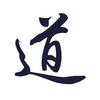
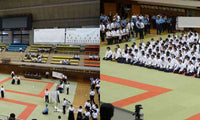
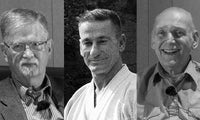
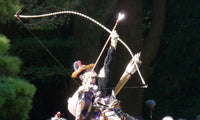
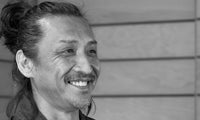
4 comments - Meiji Shrine Kobudo Embu Taikai
“considered to be Kashima Shinryu teacher”
Well, it depends what you mean by “considered”.
He branched from Kashima Shin Ryu and created “Kashima no Tachi”, so he’s not part of the Kashima Shin Ryu school, but he does teach Kashima.
Is Inaba Minoru Sensei really considered to be Kashima Shinryu teacher? I’m confused here because folks from Seki Humitake Sensei didn’t recognise Him as such.
The Hojutsu demonstration is absolutely fascinating, and I thank you for your Complete Introduction to Japanese Gunnery video (https://youtu.be/3BgP_G_U0iE). I have a question: Are these historical firearms subject to Japan’s firearms and swords law? Are they subject to the Ministry of Culture just like katana? Or are they under the control of the National Police like modern firearms?
In reply to Peter.
Thank you for your comment.
Yes, those firearms are under the 1958’s law about control and restrictions of weapons.
And no, they are not under an exception status like the Katana.
However, they are categorized in the same way as hunting firearms and competitive shooting firearms, which are not completely prohibited in Japan.
All Hojutsu practionners are also members of the National Rifle association and their practice is covered by the same regulations as competitive shooting.